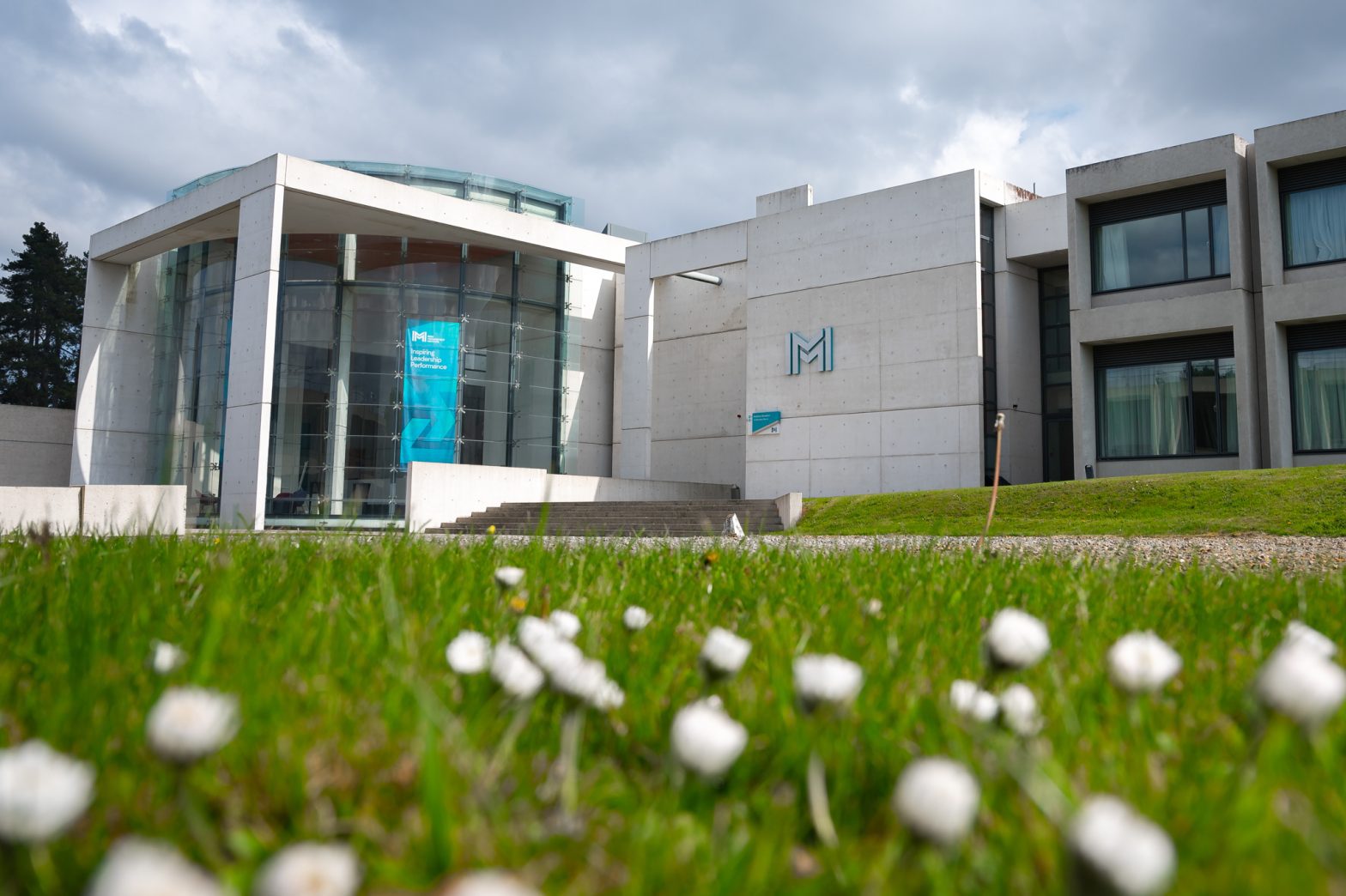AI’s Leadership Reckoning: Why Most Organisations Aren’t Ready (Yet)
By Ben Davern | 9th July 2025
The recent Senior Leaders Breakfast Briefing, “AI in Action: Real World Business Implementation,” brought together business leaders grappling with the realities of rapid transformation. From decades-old legacy systems to front-line productivity gains, or backlash over bot-generated greeting cards to the reinvention of entire business models, the insights shared across an expert panel weren’t just informative; they were a wake-up call that reinforced AI as a strategic leadership imperative.
The Age of Accessibility: Everyone Has the Same Tools. Now What?
AI isn’t new. As Kieran Gilmurray, Programme Director for the IMI’s Leading AI Strategy and Execution short programme and the AI Summer Sprint, noted: AI is an “80-year overnight success,” with roots tracing back to 1956. But what is new is the speed and scale of adoption. AI reached 50% household penetration in just three years—a rate that outpaces nearly every major technology in history.
This broad accessibility changes the competitive playing field. “Anyone can eat our lunch,” Gilmurray warned. With tools costing as little as €200 per month, the barrier to entry has collapsed. The differentiator is no longer access to technology, but how agile, innovative and strategically aligned your culture is to leverage it.
From Modernisation to Transformation: An Post’s AI Evolution
Des Morley, Chief Digital and Technology Officer for An Post, shared an account of a legacy organisation navigating reinvention. In the face of competition from digital-native giants like Amazon, An Post had to pivot and evolve. Their “Digi-Core” strategy prioritised data leverage, process modernisation, and strategic deployment of AI. Crucially, they didn’t try to rip and replace every system. Instead, they layered AI on top of legacy infrastructure to extract new value from old foundations.
Early wins included predictive analysis for seasonal parcel volumes, a gamechanger for a fixed-cost logistics network trying to flex with fluctuating demand. With predictive models, they could allocate resources in advance, smoothing out operational bottlenecks. But Des emphasised that the real “secret sauce” isn’t the tools: it’s how you harness the data.
Start with data you already have, find targeted use cases, and build AI into your operating model — not around it.
The Risks of Moving Too Fast: Ethical AI in Practice
Innovation hasn’t come without missteps. One of An Post’s external AI experiments—a St. Patrick’s Day card generator—triggered public backlash. Critics saw it as eroding value from local artistic and printing communities. The lesson: even well-intentioned AI initiatives can misfire if the ethical and social context is ignored.
That experience now guides how they approach customer-facing AI products. Their AI-powered chatbot, for instance, has been in development for over a year with one core priority: no hallucinations. Trust, Des noted, is foundational—especially for an organisation representing the state.
An Post has also implemented strong internal governance: a company-wide AI usage register, assigned champions across departments, and active participation in internal AI forums. They monitor tool usage, effectiveness, and keep policies up to date—a practice many organisations should emulate, especially when only 8% of organisations have an AI-first policy in place despite AI adoption in Ireland surging to 91% this year.
Kefron’s Story: Redeploying, Not Replacing
Paul Kearns, Chief Executive of Kefron, brought the SME lens. In a business that’s digitised records for 35 years, the current AI transformation is not just operational but deeply strategic. In accounts payable automation, they’ve moved from 10 document processors to two highly skilled AI specialists, enabling scale without headcount growth.
Crucially, these people weren’t replaced; instead they were redeployed into higher-value roles, a reminder that AI adoption can (and should) be a people story too.
They’ve also made AI adoption a structured mandate: each manager is tasked with identifying how AI can be rolled out in their area. This approach also reflects a wider shift, where AI implementation isn’t a side project but a business change initiative.
From Generative Hype to Strategic Performance
The speakers warned against viewing AI as just another desktop tool. Without a strategy for use, it becomes digital clutter. Keiran Gilmurray pointed to research from BCG on productivity gains, urging businesses to assess every tool based on value, effort and impact.
Marketing has already been deeply reshaped. Kefron’s team used AI to generate an F1 car image—only to receive a call from Mercedes, flagging copyright infringement. The stakes are real: plagiarism, copyright, and brand missteps will be growing minefields in the age of generative content.
Another under-the-radar shift: Generative Engine Optimisation (GEO). With over 1 billion people now using generative AI for search, businesses must start optimising content not just for Google, but for GPT-powered engines.
The Global Context: Ireland Can’t Afford to Wait
Several speakers raised a warning about Europe’s sluggish pace in the AI race. “I don’t wait—I don’t care what the EU is doing,” said Gilmurray bluntly. The technology is available now. The real lag is in mindset and adoption.
While Europe debates regulation, Saudi Arabia is pouring billions into AI infrastructure, from AI-powered airports to digital public services. The global competition isn’t just about business; it’s military, societal and geopolitical.
In Ireland, companies heavily reliant on SEO and PPC need to reckon with a search paradigm shift. Customers are asking new questions: “What’s your AI strategy?” “How are you using AI to reduce cost and improve experience?” Companies that don’t have answers risk losing customers and talent.
AI as Subscription, Not Project
Des drew an analogy with Netflix: “Once you’re hooked, you don’t mind paying.” AI adoption starts cheap, but costs can escalate. That’s not a deterrent—it’s a business model. The point isn’t the tool’s price tag, it’s the ROI. But, as both Kefron and An Post noted, quantifying that return is still difficult.
This is where organisations must become more data mature. AI isn’t just a capability—it’s an operating system shift. Unless there’s a clear plan to translate AI into tangible wins, it remains theoretical.
IMI Research: The Readiness Gap
To understand the human side of AI adoption, participants during recent IMI events were asked a series of questions on workforce readiness. The results speak volumes:
- Just 8% said that their workforce is ready to thrive in an AI-driven environment.
- A striking 73% said less than half — or even very few — of their people have the mindset and capabilities to navigate the disruption.
So what would help close that gap?
- The top response by far: embedding continuous learning and upskilling (47%).
- Also flagged were a greater focus on innovation and experimentation (22%) and more agile leadership (16%).
And the biggest barriers to becoming future-ready?
- Resistance to adopting AI and new technologies – 29%
- Skills and talent shortages – 27%
- Outdated culture and mindset – 21%
This isn’t a technology deficit. It’s a leadership and capability shortfall.
Conclusion: Don’t Wait for Perfect. Start with Practical
The core message from this event? Don’t wait. Start now. But start smart. AI is not optional, but neither is ethical foresight, cultural readiness, or strategic clarity.
In the words of Keiran Gilmurray, “Two clicks away from being replaced” is not a scare tactic; it’s a reflection of where global competition is heading. Whether you’re a multinational, an SME, or a public body, the window for inaction is closing.
For leaders, this means three things:
- Get AI-literate: you don’t need to code, but you do need to understand what’s possible.
- Put governance in place early: track usage, assign champions, set guardrails.
- Invest in people, not just platforms: redeploy talent, educate teams, and embed AI into strategy, not just operations.
AI is moving faster than most organisations can absorb, but the tools alone won’t be what separate the winners. It’s the people, the leadership, and the willingness to move before it’s comfortable.
Arguably, the question isn’t whether AI will change your organisation. It’s whether your organisation is ready to change with it.
From left to right: Gary McCarthy; Kieran Gilmurray; Des Morley; Paul Kearns






